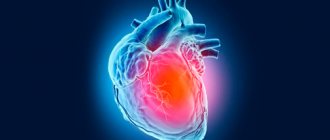Home — For the public
- Map of medical organizations
- Vaccination
- Clinical examination
- Fluorography
- Addresses and opening hours of clinics
- Emergency rooms
- Oncology
- Where to take an HIV test
- Healthy child's office
- Services
- Prevention of CVD
- Disease Prevention
- World Patient Safety Day
- Newspaper "Medical News"
- specialist
- School of Health
— Disease prevention
- HIV infection
- All about vaccination
- All about proper nutrition
- Hepatitis
- Flu
- Dementia
- Schoolchildren's health
- STD
- Tick-borne encephalitis
- Whooping cough
- Measles
- Legionellosis
- Meningococcal infection
- Oncology
- Acute intestinal infection
- Pediculosis
- First aid
- Pneumococcal infection
- Pneumonia
- Prevention of rabies
- Dependency Prevention
- Rotavirus infection
- Diabetes
- Cardiovascular diseases
- Injuries
- Tuberculosis
- Tularemia
- Physical activity
- Obstructive pulmonary disease
- Exotic infections
- Ecology
- Why is swimming in ponds dangerous?
— Prevention of addictions
- Prevention of alcoholism
- Smoking prevention
— Smoking prevention — Passive smoking, what is its danger
Smoking has become a tobacco epidemic both throughout the world and in our country. According to statistics, 60.7% of men and 21.7% of women in Russia are smokers, and a third of them are under 25 years of age. Everyone knows about the dangers of smoking, but few people think about whether passive smoking is dangerous?
Passive smoking is a condition when a non-smoker is forced to inhale air containing combustion products of tobacco from a smoker’s cigarettes.
Medical and social studies conducted in recent years have proven that smoking has a harmful effect on health not only on smokers themselves, but also on people who are nearby.
Composition of cigarette smoke
Several thousand harmful components have been found in the chemical composition of tobacco smoke, which have a toxic, carcinogenic and mutagenic effect on the body.
The main components of cigarette smoke:
- carbon monoxide or carbon monoxide;
- resin;
- nicotine;
- naphthalene;
- phenol, cresol;
- N-nitrosamines;
- aromatic hydrocarbons;
- argon;
- arsenic;
- methane;
- Nitric oxide;
- hydrocyanic acid;
- ammonia;
- hydrogen sulfide;
- pyrene, aldehyde;
- alcohol;
- inorganic compounds: lead, cadmium, nickel.
The most dangerous substances include:
- The alkaloid nicotine is a potent universal poison that destroys all organs and tissues of the body.
- Hydrocyanic acid (hydrogen cyanide) is a poison that affects the respiratory system.
- Arsenic is a toxic substance used in everyday life to poison rodents.
- Polonium is a radioactive substance that, when accumulated in the body, has a carcinogenic effect.
- Nickel is a metal that is toxic, leads to asthma, acts on the kidneys, and provokes the development of malignant tumors.
- Resin is an organic mineral that attacks lung tissue, causing cancer.
When tobacco is burned, 3 streams of smoke are formed:
- The main one is produced during a puff of smoke and is inhaled by the smoker.
- Sidestream is the smoke that comes from a smoldering cigarette between puffs.
- Smoke exhaled by a smoking person.
90% of the main flow consists of 350-500 gaseous components, of which carbon monoxide and carbon dioxide are considered especially dangerous. The rest is represented by solid microparticles with various toxic inclusions.
With passive smoking, air is inhaled mixed with the side stream of tobacco and with the smoke exhaled by the smoker.
Proven harm
Manufacturers claim that cigarettes use a completely safe substance, similar to pure water vapor. But that's not true. Let's try to find out why vaping is harmful to human health by studying its composition.
Studies have shown that the aerosol contains nicotine (not always), glycerin, flavoring components, propylene glycol, acetaldehyde, formaldehyde and other carcinogenic (provoking the formation of malignant tumors) substances.
Propylene glycol is used in the production of household chemical products. Once in the body, it affects the kidneys and brain, disrupting their functioning.
Natural nicotine in vapes is replaced with chemical nicotine, which poses an even greater danger to the body.
Chemical substitutes include nicotine sulfate. It was previously used as a pesticide to kill agricultural pests and control plant diseases, but was banned due to increased toxicity.
How is vaping harmful to human health if it does not contain nicotine? The flavors contained in the aerosol penetrate into the lungs and damage them at the cellular level. Exposure has a cumulative effect and over time provokes the development of pneumonia, asthma, and congestive cardiovascular failure. In addition, even pure steam, constantly affecting the mucous membranes, causes them significant harm.
The harm of passive smoking
Being in the same room with an active smoker for an hour, a non-smoker inhales a portion of tobacco smoke that is equivalent to smoking half a cigarette.
The harmful effects of passive inhalation of tobacco smoke are conventionally divided into 2 groups.
Immediate action is what a person feels immediately after being in a smoky room:
- Irritation of the mucous membranes of the nasopharynx, bronchi, eyes: sore throat, cough, lacrimation.
- Dry mouth.
- Effects of tobacco toxins on the central nervous system: headache, dizziness, nausea.
- Disorder of the cardiovascular system with symptoms of hypoxia: increased heart rate, shortness of breath, increased blood pressure due to a decrease in the oxygen content in the inhaled air.
- Allergic reactions to components of tobacco smoke.
Delayed, which develop over a long period of time:
- Pathologies of the bronchopulmonary system: asthma, bronchitis, emphysema.
- Chronic diseases of the ear, nose and throat.
- Diseases of the heart and blood vessels: early atherosclerosis, ischemic disorders, heart rhythm disturbances, hypertension.
- Allergic diseases.
- In children there is a delay in psychomotor development.
- Increased risk of malignant neoplasms.
- High percentage of disability and death.
According to American researchers, the delayed effects of passive smoking cause 46 thousand deaths per year, with 14 thousand deaths due to oncology, and 32 thousand due to heart and vascular diseases.
Impact of passive smoking on human health
Inhaling other people's cigarette smoke is called secondhand, or unintentional, smoking.
A non-smoker exhales "side smoke" from a smoldering cigarette and "mainstream smoke" inhaled and exhaled by the smoker. Tobacco smoke is a major source of indoor air pollution. It contains more than 4,000 chemical reagents, some of which are toxic substances, and about 60 of them contain components that, with varying degrees of certainty, can be classified as carcinogens (substances that cause cancer).
Over the past two decades, a lot of evidence has accumulated about the negative impact of secondhand smoke on human health. We can say that passive smoking is a risk factor for many diseases.
Most studies have concluded that there is an increased risk of lung cancer, especially in people who are regular smokers. A comprehensive analysis showed that in women the risk of acquiring this disease increases by almost 25%, in men by 30%. Moreover, studies of non-smokers who inhale tobacco smoke at work have found a 16-19% increase in the risk of lung cancer.
In the report of the International Committee for Research on Cancer, the authors conclude that "based on the available evidence, it can be concluded that secondhand smoke is a cause of lung cancer in people who have never smoked."
The presence of specific tobacco carcinogens in the blood of non-smokers clearly showed the negative impact of passive smoking on human health. The study found a relationship between the risk of lung cancer in nonsmokers, the number of cigarettes smoked in the presence of a nonsmoker, and the number of years the nonsmoker was exposed to secondhand smoke. The study authors concluded that “epidemiological and biochemical evidence of environmental pollution from tobacco smoke, as well as the presence of specific carcinogens in the blood and urine of non-smokers exposed to second-hand smoke, fully confirms the assumption that inhalation of second-hand tobacco smoke causes lung cancer.” .
The first evidence of a relationship between secondhand smoke and heart disease began to emerge in the mid-1980s. The US National Research Council in its reports indicated that, from a biological point of view, environmental pollution from tobacco smoke can contribute to the occurrence of coronary heart disease. Research in the early 1990s found that heart disease caused by secondhand smoke is the third leading cause of preventable death in the United States, second only to active smoking and heavy alcohol consumption. The study concluded that nonsmokers living with smokers had a 30% increased risk of heart disease.
Considering how common heart disease is among nonsmokers, an additional 20% increase in risk is significant. It turns out that even short-term exposure to tobacco smoke can lead to heart disease, while continued exposure to contaminated areas will have only minor additional effects. This effect may be due to the fact that tobacco smoke causes blood to thicken, a phenomenon known as platelet aggregation. Recent studies have shown that even a half-hour presence of a non-smoker in a room contaminated with tobacco smoke can be enough to damage the cells of the coronary arteries.
Unlike the situation with lung cancer, where the risk of disease is proportional to the duration of exposure to tobacco smoke, the risk of acquiring heart disease in a passive smoker may be only half that of a person who smokes 20 cigarettes a day, even if the non-smoker inhales only 1% of the smoke. .
While the risk of heart disease among nonsmokers exposed to tobacco smoke is high, if you avoid second-hand smoke for at least a year, your arteries tend to heal. And passive smokers achieve the greatest health improvement after two years of stopping passive smoking.
A study conducted in New Zealand showed that passive smoking, as well as active smoking, increases the risk of stroke. It was found that due to passive smoking, the risk of stroke in non-smokers increases to 80%. The risk was significant among both men and women. By comparison, the risk of stroke in active smokers is four times higher than in those who have never smoked, quit smoking more than 10 years ago, and are not exposed to second-hand smoke. Considering that stroke is one of the most common causes of death, it can be concluded that secondhand smoke has a serious negative impact on the health of non-smokers. Second-hand smoke has slow but significant effects on the respiratory tract of non-smoking adults, including increased cough, sputum production, chest pain and decreased lung capacity. For asthmatics, passive smoking leads to serious problems, as cigarette smoke can cause asthma attacks.
Adults exposed to tobacco smoke at home and at work have a 40% to 60% higher risk of asthma than those not exposed to secondhand smoke.
Many people exposed to secondhand smoke experience discomfort such as eye irritation, headache, cough, dizziness and nausea. These negative consequences of environmental pollution from tobacco smoke, although not life-threatening, negatively affect productivity at work and lead to strained relationships between smokers and non-smokers.
It is necessary to take into account the harmful effects of tobacco smoke on humans. Prevention of passive smoking should be aimed at reducing the list of public and government institutions in which smoking is permitted.
The list of smoking-free places, so-called smoking-free zones, should increase: cinemas, entertainment centers, sports facilities, bars, restaurants.
The beginning of this struggle was laid by the ban on smoking in medical organizations and government institutions, but it is necessary that this be the goal of every citizen. Getting rid of the bad habit of smoking tobacco should become the norm and an end in itself for every person.
methodologist S.M. Lyashchevsky
The effect of passive smoking on the respiratory system
Constant irritation of the respiratory tract mucosa by tobacco smoke leads to the formation of chronic rhinitis, pharyngitis, and bronchitis. Bronchial asthma develops with passive smoking 5 times more often than in people protected from tobacco smoke.
Problems with nasal breathing cause inflammation of the Eustachian tube, which connects the mouth to the ear. As a result, frequent otitis media and hearing loss are observed.
Radioactive isotopes of tobacco smoke, recognized as the strongest carcinogens, when entering the lung tissue, cause metaplasia of alveolar cells with the formation of malignant tumors.
Prohibited by law
Smoking in public places, including children's playgrounds, is already prohibited by law.
The law will come into full force only from June 1, 2014. The ban also applies to hotels, sanatoriums and resorts, medical and educational institutions, all public transport, retail outlets, social services and other places of public use, so that a qualitative improvement in the life and health of people who do not want to become involuntary smokers is expected soon. Tags:
- Passive smoking
central nervous system
In addition to the alkaloid nicotine, which has a neurotoxic effect, tobacco smoke contains many other poisonous and toxic substances (carbon monoxide, phenol, ammonia) that damage various structures of the brain.
The results of the impacts are:
- Psycho-emotional disorders, rapid mood swings: agitation, apathy
- Sleep disorder: insomnia, daytime sleepiness.
- Change in taste sensations.
- Loss of appetite, nausea.
- Headaches, dizziness.
- Weakness, increased fatigue.
- Decreased brain function: absent-mindedness, forgetfulness, memory impairment.
The main effects of nicotine on the body
In terms of its general effect on the body, nicotine is a stimulant.
The table below shows the main acute effects of its effects on the human body. Manifestations of nicotine use
| Body system | Main symptoms of intoxication |
| CNS/behavioral manifestations |
|
| The cardiovascular system |
|
| Endocrine system |
|
| Respiratory system |
|
Up
Heart, blood vessels
Under the influence of toxic substances from tobacco smoke, a pronounced dysfunction of the cardiovascular system develops. This contributes to the development of early atherosclerosis, angina pectoris, hypertension, which ultimately provokes heart attacks and strokes.
Carbon monoxide formed during the combustion of tobacco, entering the blood, reduces the ability of red blood cells to deliver oxygen to the cells of the body, leading to thrombus formation. Blockage of arteries with blood clots causes heart damage (infarction) and circulatory disorders in the lower extremities (obliterating endarteritis).
If you already have cardiovascular disease, even short-term exposure to tobacco smoke can lead to severe attacks of angina.
Smoking to quit! Vladimir Shakhidzhanyan
“ Passive smoking is more dangerous than usual ,” say those who are forced to air their clothes on the balcony, worry about whether their hair smells, and think about how to hide from the omnipresent smoke.
“ Passive smoking is absolutely harmless - all the poisons remain on my lungs,” stubborn smokers object.
Who is right: smokers or non-smokers around them? Let's try to answer the objections in the dispute.
“I’ll hit myself the hardest!”
This is certainly true.
You can immediately name a dozen and a half diseases—fatal or not—that accompany a smoker like a cloud of smoke. Among them are more than a dozen types of cancer, stomach ulcers, heart problems, bleeding gums and much, much more. But this statement (“I'll hurt myself the most!”) cannot be an excuse for putting family members, friends, co-workers, or even pets at risk.
According to various studies, non-smoking family members suffer from the same diseases as smokers themselves . They suffer more severely from pulmonary diseases and have a greater risk of hypertension, cataracts, stroke (+ 25% risk) and malignant tumors. It has been proven that secondhand smoke can cause lung cancer in non-smokers.
It’s not easy for pets, especially dogs. What makes them vulnerable is the dog’s notorious devotion (they often go out to “smoke” with their owner) and their keen sense of smell, which can be damaged due to the high concentration of smoke. As a rule, dogs of smokers live shorter lives and die from malignant tumors.
“I have already inhaled all the harmful substances!”
And one cannot but agree with this statement.
However, passive smokers are exposed to a lot of toxins: smoke consists of more than 4,000 chemicals , of which 69 are carcinogenic and cause disease, disability and death.
Since more men smoke, children and pregnant women are most likely to suffer from smoking. Children of smokers are more susceptible to diseases such as bronchitis, asthma and pneumonia.
In addition, passive smoking can lead to delayed fetal development, as it directly affects the developing brain of the child. A pregnant woman who does not smoke is more likely to give birth earlier and with a lighter baby if she is exposed to secondhand smoke at home.
Paradox: Some doctors argue that people around a smoker are at greater risk than the smoker himself. While the smoker inhales smoke through the filter, people around him inhale unfiltered tobacco smoke and the so-called sidestream smoke emitted by the lit end of the cigarette or hookah.
“I smoke on the balcony, that’s enough!”
There is no safe level of exposure to secondhand smoke. Any exposure is harmful. It’s no wonder that bans on smoking in public places have become stricter in recent years.
The only way to completely protect nonsmokers from exposure to second-hand smoke indoors is to stop smoking (fortunately, there are plenty of ways to quit smoking today). Even if you smoke in the absence of non-smokers or in another room, you need to understand: the smoke remains in the environment for at least about four hours. You can't see it or smell it, but it still remains dangerous.
Neither ventilation nor an air purifier can protect non-smoking family members or neighbors.
“The harm of passive smoking has not been proven!”
Of course, tobacco smoke is much softer and gentler than smoke from a fire or a garbage container, the smell of burnt plastic, or carbon monoxide from defective stove heating. However, the combustion products released when smoking cigarettes are toxic, and the body, especially one that is not perfectly healthy or developing, is vulnerable to many diseases.
Medical studies have shown that the harm from passive smoking becomes noticeable within five minutes .
- After five minutes, the arteries become less flexible, like those of a person who smokes.
- After half an hour, the blood becomes thicker, and fatty deposits in the vessels increase the risk of heart attack and stroke.
- After two hours, arrhythmia may occur.
Of course, it is difficult to gather a controlled group of passive smokers over several decades to study how smoke affects their health. On the other hand, lung function tests can detect conditions associated with the effects of second-hand smoke (such as asthma) , and a doctor can test body fluids for nicotine levels.
“I switched to electronic cigarettes or vaping, it’s safe!”
Still no.
As e-cigarettes and similar devices become more widespread, there is growing concern about the harmful effects of vapor exhaled by vapers . It has already been called passive steam.
Unfortunately, there is not much research yet on the effects of alternative methods of nicotine delivery. Scientists have only recently begun to study “secondary vapor” and smoke from e-cigarettes.
However, former US Surgeon General Jerome Adams has already concluded that e-cigarette smoke is not harmless . It can expose others to nicotine and possibly other harmful chemicals such as cotinine, formaldehyde and toluene.
It is unlikely that a cloud of smoke encountered by a non-smoking person somewhere on the street will cause death from diseases associated with the harmful effects of tobacco. But it is impossible to predict how resistant the body will be to many years of passive smoking. And if so, do smokers really have the right to test the strength of those around them?
Effect of secondhand smoke on children
One of the proofs of the harmful effects of passive smoking on children is the fact that in families where one or both parents smoke, the child’s incidence of respiratory diseases, bronchitis, and pneumonia increases several times. Smoke components penetrate into the breast milk of a nursing mother, that is, gradual poisoning of the child occurs, the consequence of which is depression or stimulation of the central nervous system: the child is inhibited, lethargic, sleeps a lot, or, conversely, screams, cries, eats poorly, regurgitates, does not gain weight.
The formation of minimal brain dysfunctions, which are manifested by delayed speech development and fine motor skills, which subsequently causes problems with assimilation of educational material, poor adaptation in a team, and behavioral characteristics at school. Increased susceptibility to allergic diseases: atopic dermatitis, bronchial asthma.
Long-term consequences of nicotine intoxication in a child: increased risk of developing diabetes, obesity, autism, cardiovascular diseases, hypertension.
Since the child’s body is in the stage of active growth and development, its cells are more susceptible to mutations due to the action of tobacco toxins.
Dear patients!
Passive smoking is the involuntary, in most cases unwanted, inhalation of air containing tobacco products from other people, usually indoors.
There are those who believe that second-hand smoke is not harmful or no more harmful than life in a metropolis, and the dangers of second-hand smoke are nothing more than a myth. In fact, in recent years, there has been increasing evidence that so-called secondhand smoke contributes to the development of diseases characteristic of smokers in non-smokers. No matter how smoking tobacco is called an addiction or a disease, and no matter how much is said about its harm, the fact remains indisputable that a person smokes tobacco voluntarily. This is his personal choice, his expressed desire. No one can force you to go to the store, buy a pack of cigarettes and smoke it all at once. But, unfortunately, they don’t ask about this whether you want to smoke passively. And here the choice in most cases is made instead of you. It is very difficult to protect yourself from inhaling tobacco smoke. Of course, those who suffer the most harm are nonsmokers whose family members or work colleagues smoke. However, even if you are lucky and those around you lead a healthy lifestyle, you still find yourself several times every day near a smoking person who has arrogated to himself the right to poison you with the tobacco smoke of his cigarette. But this is actually a poison, from which people die, even without smoking.
A large body of scientific research shows that second-hand tobacco smoke leads to the development of many diseases , including cardiovascular diseases, lung cancer and diseases of the respiratory system. In 2004, a study by the World Health Organization's International Agency for Research on Cancer concluded that nonsmoking second-hand smokers are exposed to the same carcinogens as active smokers. Sidestream smoke contains more than 4,000 chemicals, including 69 proven carcinogens. Particularly dangerous are well-known strong carcinogens such as polycyclic aromatic hydrocarbons, tobacco-specific N-nitrosamines and aromatic polyesters such as 4-aminobiphenyl. Although inhaled smoke, sidestream smoke and second-hand smoke contain essentially the same components, the concentrations of these substances vary between types of tobacco smoke. Research by tobacco companies themselves has shown that several known carcinogens are present in higher concentrations in sidestream smoke than smoke inhaled when smoking.
The harm from passive smoking can affect the body immediately or after some time . The results of passive smoking, which appear immediately, are irritation of the respiratory system, nasopharynx, and eyes. Non-smokers are much more sensitive to tobacco smoke; they may experience dizziness, nausea, migraines, and can also cause an exacerbation of cardiovascular diseases or trigger an attack of bronchial asthma. The harmful effects of passive smoking can manifest themselves over time, causing various diseases of the cardiovascular, respiratory and digestive systems, and can lead to lung cancer.
Children's passive smoking: Passive smoking is harmful starting from the prenatal period, especially if the pregnant woman herself smokes. The fetus develops oxygen starvation, which is fraught with many consequences. Cigarette smoke inhaled by the mother affects the baby’s nervous and immune systems. When the mother smokes, the fetus is in a smoke screen. There is even the term “fetal tobacco syndrome.” In the long term, intrauterine smoking ends tragically: fetal growth restriction, low birth weight, premature birth, stillborn children and children with developmental defects incompatible with life. Moreover, this also applies to the situation when the mother turns out to be a passive smoker.
Regarding maternal smoking, in almost half of the cases this is the cause of sudden infant death syndrome. And passive smoking of an already born baby can cause sudden infant death syndrome.
Children in families where parents smoke experience an increased number of colds; children are noticeably poor in health and have low immunity. Bronchitis and pneumonia in children develop more often during the first year of life if their parents smoke. Passive smoking disrupts the proper development and formation of the respiratory system in children. Cigarette smoke also negatively affects mental abilities - nicotine, when entering the body, blocks the development of creative thinking in a child, which then leads to poor performance at school.
Children who have been exposed to tobacco smoke due to their smoking parents will have a high predisposition to smoking and will have poor health.
If you smoke, keep in mind that all toxic substances end up on your children's clothes and hair. And just so you know: when holding a child, a smoking person (even without a cigarette) poses a certain threat to him.
Passive smoking poses a danger to people who have quit smoking. When inhaling tobacco smoke, such people again start the mechanism of habit, again forming nicotine addiction. Often people cannot stand the craving for tobacco that appears and start smoking again. Because of this, it is best for former smokers to stay away from people who smoke to avoid exposure to secondhand smoke.
The effect of secondhand smoke on pregnant women
The negative impact of passive smoking on pregnant women is difficult to overestimate.
Nicotine has a vasoconstrictor effect on the vessels of the uterus and placenta.
The body's absorption of vitamins C, B, and folic acid, which are necessary for normal growth and development of the fetus, is reduced.
There is a weakening of the immune system, which is already suppressed in a pregnant woman, so that the body does not reject the embryo, which half consists of someone else’s (paternal) genetic material. This causes an increased incidence of acute infections in pregnant women and aggravates the course of chronic pathologies.
Components of tobacco smoke have a mutagenic effect on eggs, which can cause genetic defects in offspring.
Often, against the background of tobacco intoxication, the placenta is located abnormally (placenta previa) in the lower part of the uterus near the internal uterine os. In this case, the woman will not be able to give birth naturally, since the placenta mechanically blocks the exit from the uterus.
Premature placental abruption is a complication when, as a result of vascular damage, the placenta separates before the birth of the fetus. The presence of the fetus in the uterus prevents the contraction of the muscle layer, so the vessels in the area of placental abruption bleed, and intrauterine bleeding develops, threatening the life of the mother and fetus.
Pathologies developing in the fetus under the influence of tobacco smoke:
- Placental insufficiency, due to which the fetus receives little nutrients and oxygen. As a result, spontaneous miscarriages, premature birth, and the birth of a child in a state of hypoxia and with low weight are possible.
- Fetal growth retardation syndrome. Children experience malnutrition during full-term pregnancy (body weight less than 2500 g), neurological abnormalities, a tendency to infectious diseases, and retardation in physical and mental development.
- The risk of congenital fetal anomalies increases.
- High likelihood of developing sudden infant death syndrome.
“A poison that does not act immediately does not become less dangerous”
G. Lessing
Often, people do not think about the harm caused to them by tobacco smoke, believing that cigarettes only harm those who smoke them. This explains our widespread position of tolerance and loyal attitude towards smokers, even if they smoke in public places. Many non-smokers simply do not realize that by inhaling the surrounding air containing tobacco combustion products (second-hand tobacco smoke), they involuntarily become passive smokers. And existing myths about passive smoking further mislead them.
The most common misconceptions about secondhand smoke:
#1: “It’s okay if I’m in a smoky room.”
It has been scientifically proven that cigarette smoke causes more harm to a passive smoker than to a direct smoker. This is due to the fact that a smoker inhales smoke that has passed through a special filter, while a non-smoker inhales unfiltered smoke, which contains the largest amount of chemically active harmful substances. Research by tobacco companies themselves has shown that several known carcinogens are present in higher concentrations in sidestream smoke than smoke inhaled when smoking. At the same time, a non-smoker reacts more painfully to the components of tobacco smoke, since his body is not adapted to the effects of smoke, like a smoker.
No. 2: “We have good ventilation.”
Even the most powerful ventilation system can only destroy the smell, but not the harmful substances contained in the smoke. In addition, most of the smoke settles and is then absorbed into clothes, hair and even wallpaper, and then to get rid of the consequences of a smoked cigarette, you will need more than just ventilating the room.
The harm from tar, nicotine and other harmful chemicals contained in a cigarette is enormous for a passive smoker and the consequences are very serious. Scientific research shows that passive smoking contributes to the development of diseases in non-smokers that are characteristic of smokers and increases the risk of disability and premature death.
The harm from passive smoking can affect the body immediately or after some time.
The results of passive smoking that appear immediately:
- irritation of the respiratory system, nasopharynx and eyes (cough, sore and sore throat, red eyes, etc.);
- dizziness, nausea, migraine;
- worsening mood, nervousness, depression.
Most people do not pay much attention to these seemingly minor disorders in the body, and often do not associate their occurrence with exposure to tobacco smoke. However, with prolonged and constant exposure to such an environment, more serious symptoms of disease develop.
Long-term effects of secondhand smoke
- Cancer. Passive smoking increases the risk of developing cancer. A 2004 review of evidence from a worldwide research database by the International Agency for Research on Cancer found that "involuntary smoking (exposure to second-hand smoke) is carcinogenic in humans":
- Lung cancer. Studies conducted in the USA, Great Britain, Australia, and Germany have shown that the risk of lung cancer in passive smokers increases, according to rough estimates, by 30% compared to non-smokers.
- Mammary cancer. The California Environmental Protection Agency concluded in 2005 that secondhand smoke increases the risk of developing breast cancer among young women before menopause by 70%.
- Kidney cancer. A US study (2008) showed an increased risk of developing renal cell carcinoma among never smokers exposed to combined exposure to second-hand smoke at home and at work.
- Cardiovascular diseases. Chemicals contained in second-hand tobacco smoke contribute to the development and progression of diseases such as atherosclerosis, hypertension, and coronary heart disease. Subsequently, this can lead to more serious complications - myocardial infarction and cerebral stroke.
- Diseases of the ear, nose and throat. The risk of developing middle ear inflammation increases.
- Asthma. Research from the National Cancer Institute found that nonsmokers exposed to second-hand smoke in the workplace were twice as likely to develop asthma than others. In a home environment where there is at least one person who smokes, all family members are five times more likely to get sick.
- Disorders of the reproductive system (exhausted ovarian syndrome, deterioration of sperm counts) can cause a decrease in the ability to conceive, and in the worst case, infertility.
- Memory and thinking disorders (especially over the age of 50).
- Deterioration of skin condition.
The risks associated with passive smoking increase if children and pregnant women are passive smokers.
Passive smoking during pregnancy
When a pregnant woman is forced to inhale cigarette smoke from smoking household members, this can be regarded as deliberate harm to her and the child.
Passive smoking during pregnancy causes such pathological conditions as:
- high risk of premature birth;
- low weight of the fetus and child at birth, which may lead to retardation in physical and mental development and require additional care;
- reduction in the circumference of the newborn’s head and chest;
- increased risk of sudden infant death syndrome;
- atopic dermatitis in a child.
Passive smoking in children
The harm of passive smoking in children is not immediate, it accumulates gradually, and if a baby is born into a family of a smoker (or smokers), then by the time of birth he has a “bouquet” of non-compliance with the norms for newborns.
The consequences of passive smoking in children can be:
- retardation in physical development - and this entails difficulties with mental development;
- decreased immunity, which has not only current but also long-term consequences (children of smokers get sick more often - according to various estimates, the incidence of respiratory infections is 8-13 times higher in them compared to children of non-smoking parents);
- various allergic diseases, most often dermatitis;
- poisoning of an infant's body with toxic components of tobacco smoke can cause either depression of the nervous system (and the parents are happy - the baby is sleeping), or its excitement - followed by parental anger of an eternally crying baby;
- neurological problems (studies have confirmed that children forced to breathe cigarette smoke perform worse in educational institutions, have difficulty falling asleep, memory, and adapting to a team due to increased excitability and nervousness).
How to protect yourself from passive smoking?
A radical and, perhaps, the most correct method of solving all problems associated with passive smoking is to quit smoking.
But if a person is led by his own weakness and does not want to quit smoking (and also refuses to accept arguments about the dangers of passive smoking for his loved ones and others), then you can try to mitigate the danger of passive smoking - for the sake of your own health.
- At home
In the smoking area (at home this is usually the kitchen and bathroom), install additional ventilation devices - in the shaft, in the window, on the kitchen hood. Ventilate and carry out wet cleaning more often, not only the floor, but also all surfaces of furniture and household items.
- In the office
Demand compliance with the law banning smoking in public places. Unite with non-smoking (or conscientious smokers) colleagues and achieve the allocation of smoking areas equipped in accordance with this law. Ventilate office premises more often, carry out wet cleaning of the workplace (ordinary wet wipes are excellent - they can be used to wipe the table, the surface of furniture and equipment at any time).
- Limiting children's secondhand smoke
Prohibit family members from smoking in areas close to the children's room, and even more so in the presence of children. Do not approach the child for at least 10 minutes after the last cigarette smoked.* Carry out wet cleaning using detergents (water alone does not do a good job of removing tobacco soot). Ventilate the entire apartment at least 4 times a day for 15–30 minutes, depending on the season. *As of October 2011, St. Francis Hospital Children's Ward in Alexandria, Louisiana, USA, has banned employees whose clothing smells of tobacco smoke. This ban is connected with the fact that settled tobacco smoke poses a particular danger to infants and small children.
- In public places
Avoid places where smokers gather (smoking areas, secluded areas of houses, etc.). Choose establishments where smoking is prohibited (catering establishments, entertainment centers, etc.)
If it so happened that you had to be in a smoky place, be sure to change your clothes after that, take a shower and thoroughly wash your hair.
TAKE CARE OF YOURSELF AND YOUR LOVED ONES
PROTECT YOURSELF AND YOUR FAMILY FROM THE HARMFUL EFFECTS OF TOBACCO SMOKE
REMEMBER THAT THE RIGHT TO CLEAN, SMOKE-FREE AIR IS EVERYONE’S RIGHT
The article was prepared using materials from the sites:
- https://ne-kurim.ru/
- https://brosaem.info/passivnoe-kurenie.php
- https://ru.wikipedia.org/wiki/
- https://skazhynet.ru/vred-passivnogo-kureniya
Where can you go for help when quitting smoking?
call the Advisory Call Center: 8-800-200-0-200
(the call is free for residents of Russia).
OGBUZ "Irkutsk Regional Center for Medical Prevention" invites you to visit:
- Tobacco cessation rooms:
1. Irkutsk Regional Psychoneurological Dispensary (Irkutsk, Sudareva Lane, 6);
2. Irkutsk Regional Oncology Center (Irkutsk, Frunze St., 32)
3. Health Center of the Irkutsk City Clinical Hospital No. 1 (Irkutsk, Baikalskaya St., 120)
- Health schools:
1. Regional State Autonomous Institution “Irkutsk City Hospital No. 8”, Health Center, tel.: 703-758
2. OGBUZ "Irkutsk Children's City Clinic No. 6", Health Center, tel.: 706-248, 706-249.
Which smoking is more dangerous: passive or active?
The question of what is more harmful: passive or active smoking is still under study.
A smoker has already developed adaptation mechanisms to smoke components and nicotine, and the harm of passive smoking in a person who does not have this habit is more pronounced, since his body reacts more painfully to toxic smoke.
Harmful components of smoke, settling and accumulating on hair, clothing, furniture, and furnishings, gradually poison the human body.
Risk areas
Despite the fact that today offices are increasingly equipped with special smoking rooms, as well as in airports, train stations, cinemas, cafes and other public places, there are still many places where this division into smokers and non-smokers is not respected. These are some nightclubs and other entertainment venues for youth, a number of educational institutions, heavily smoky, long subway passages (and after all, someone works in them!), festivals, and other public events, as well as public parks with queues for attractions where there is sure to be a smoker poisoning those present with smoke.
How to avoid secondhand smoke
Smokers, for the sake of an addiction, themselves choose the path of chronic intoxication of the body, but why should those around them be exposed to dangerous consequences for health and life along with them?
The most radical way to solve the issue of passive smoking is to completely quit smoking. But for various reasons, not every person is able to quit smoking, so measures have been developed to limit the harmful effects of tobacco smoke.
If they smoke at home
In an apartment, the smoking area is usually the kitchen or toilet. To reduce smoke in these rooms, additional ventilation devices should be installed: on the kitchen hood and in the air duct opening in the toilet.
It is necessary to frequently ventilate the apartment and carry out wet cleaning.
If they smoke at work
Smoking in work areas is strictly prohibited. The administration is obliged to provide smoking employees with a special room equipped with a powerful ventilation unit and tobacco smoke absorbers.
If you smoke in public places
In public places: educational institutions, medical organizations, cafes, hotels and other institutions, a smoking ban has been imposed. In case of violation, it is necessary to demand from the administration of establishments to comply with the Federal Law “On protecting the health of citizens from the effects of environmental tobacco smoke and the consequences of tobacco consumption.”
Studies conducted in many countries around the world on the impact of passive smoking on human health have proven that non-smokers living or working with smokers have a high risk of developing pathological processes in the body, as with active smoking.
Why is smoking dangerous for others?
Inhaling air containing tobacco smoke is called passive smoking. Tobacco smoke is harmful not only to the smoker himself, but also to those around him. This especially affects young children in families of smokers. Sleep and appetite disorders, disruption of the stomach and intestines, increased irritability, poor academic performance and retardation in physical development - this is not a complete list of the consequences of passive smoking in children.
The smoke that flows from a lit cigarette is unfiltered smoke. It contains 50 times more carcinogens, twice as much tar and nicotine, five times more carbon monoxide and 50 times more ammonia than smoke inhaled through a cigarette. For people working in heavily smoky environments, exposure to secondhand smoke can reach the equivalent of 14 cigarettes per day, which puts them closer to a typical smoker.
According to studies conducted in the United States, there is convincing evidence of an increase in the incidence of lung cancer among non-smokers who live with smokers.
Passively inhaled tobacco smoke is a strong irritant to the lungs. Research has shown that children raised in homes where parents smoke show signs of disorders that are closely linked to heart disease in adulthood. In people with asthma, especially children, second-hand smoke can trigger asthma attacks.
According to the Big Explanatory Dictionary of the Russian Language, “smoking is the process of burning a substance (crushed tobacco leaves - ed.) to produce aromatic smoke.” The so-called “aromatic” smoke is nothing more than a hot mixture of harmful gases, vapors, liquids and solids resulting from the combustion of the contents of a cigarette (cigar, cigarette, etc.). The chemical composition of tobacco smoke is very complex. Depending on the quality, grade and composition of tobacco, 1200 components are distinguished in it, over 40 of which are carcinogenic, i.e. causing various malignant tumors.
A lit cigarette during its “short life” is a source of main (main) smoke flow, which smokers enjoy, and a side (side) smoke flow , which affects others forced to passively smoke and inhale harmful substances.
The smoke of the main and side streams differs in composition.
More than 90% of the main stream consists of 350-500 gaseous components, of which carbon monoxide and carbon dioxide are particularly harmful. The rest of the main flow consists of solid microparticles, including various toxic compounds.
The main stream of tobacco smoke is formed by 35% of the burning cigarette, 50% goes into the surrounding air, making up an additional stream. From 5 to 15% of the components of a burnt cigarette remain on the filter.
The additional flow contains 4-5 times more carbon monoxide, 50 times more nicotine and tar, and 45 times more ammonia than the main stream!
Thus, many times more toxic components enter the atmosphere surrounding the smoker than enter the body of the smoker himself. It is this circumstance that causes a particular danger to others.
Why is smoking dangerous for others?
- Many non-smokers are exposed to tobacco smoke because they inhale it at home, at work, and in public places where smokers are present.
- A smoker with a cigarette that spreads tobacco smoke forces a non-smoker in the same room to passively smoke, whether he wants to or not. At first it was believed that tobacco smoke had only an irritating effect on non-smokers in the sense that their mucous membranes of the nose and eyes became inflamed, and they experienced dry mouth. As information accumulated, it became clear that non-smokers who live or work with smokers are truly putting their health at risk, they develop diseases characteristic of smokers (cardiovascular diseases, diseases of the respiratory system, gastrointestinal tract, skeletal system, eyes, skin , oncological diseases of various human systems).
- A passive smoker , being in a room with active smokers for one hour, inhales a dose of some gaseous components of tobacco smoke that is equivalent to smoking half a cigarette.
- If a child lives in an apartment where one of the family members smokes 1-2 packs of cigarettes, then the child has an amount of nicotine in his urine corresponding to 2-3 cigarettes. Children exposed to passive smoking are more likely to suffer from infectious respiratory diseases, incl. pneumonia and bronchitis than children in whose homes there is no smoking.
- The tobacco smoke that a person is forced to inhale contains 50 times more carcinogens and ammonia, 5 times more carbon monoxide, twice as much tar and nicotine than enters the body of the smoker himself. In the side stream of tobacco smoke, the concentrations of volatile nitrosamines are 50-100 times higher than in the main stream.
- People with allergies , chronic bronchitis, pneumonia or sinusitis (sinusitis or sinusitis) feel more sensitive to tobacco smoke.
- Impact on pregnancy (women exposed to tobacco smoke during childhood face an increased risk of miscarriage).
- The risk of developing lung cancer due to “passive smoking” in a non-smoking family member is 3.5 times higher than in non-smoking families, and lung diseases in infancy and early childhood in children in families of smokers is almost twice as high.
- Passive smoking or tobacco smoke in the workplace or home is considered a conditional “occupational hazard” to health. After 1.5 hours of staying at the workplace in a smoky room, the concentration of nicotine in the body of non-smokers increases 8 times, and the content of other toxic components also increases many times over.
- Experts have calculated that the harm of passive smoking corresponds to the harmful effects of smoking 1 cigarette every 5 hours and after 10-15 minutes. it can cause excessive lacrimation: in 14% of non-smokers - a short-term deterioration in visual acuity and in 19% - increased secretion of mucus from the nose.
- Staying for 8 hours in an enclosed area where people smoke leads to exposure to tobacco smoke equivalent to smoking more than 5 cigarettes.
- Indoor smoking can have complex effects with other pollutants and therefore poses a significantly greater risk than exposure to a single toxic substance. Thus, with a high concentration of tobacco smoke in the air of a living room, the concentration of formaldehyde in it increases and can exceed the permissible limit by 5-10 times, and the content of such a dangerous toxic substance as styrene doubles. The environmental danger of toxic substances contained in tobacco smoke is aggravated by the fact that they are absorbed by walls, ceilings, floors, furniture, and then migrate into the air of the home.
There is no safe level of human exposure to second-hand smoke. Neither ventilation nor filters, even combined, can reduce indoor smoke exposure to levels considered acceptable. But it is necessary and necessary to protect non-smoking citizens from the effects of tobacco smoke and the diseases that cause it.
Smoking is not a natural need of the body, like food, water or sleep. And although a person himself chooses: to smoke or not to smoke, freedom of choice does not give the smoker the right to poison others.
All Belarusians, young and old, in any place and at any time of the year, deserve the right to breathe clean air, free of tobacco, too!









